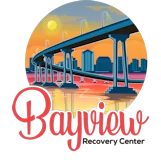Prescription Drug Rehab in San Diego, California
Prescription Drug Addiction Treatment
You never thought it would happen to you. Maybe it all started with pills for pain after surgery, but soon you find yourself needing them all the time. Sadly, this is a big problem nationwide, affecting many people. It’s not just about where you’re from or who you are. To deal with this, we must help each other out, provide treatment options, and ensure people know about the risks associated with prescription drug abuse before it’s too late.
The good news is that there are addiction treatment options available to help you detox and get back on the road to recovery. At Bayview Recovery Center’s prescription drug rehab center in San Diego, California, we provide the therapy and support you need to regain control of your life.
What are Prescription Drugs?
Prescription drugs refer to medications that can only be obtained with a prescription from a licensed healthcare professional. These drugs are typically used to diagnose, treat, or manage various health conditions. They can range from antibiotics for treating infections to painkillers for managing chronic pain or antidepressants for alleviating symptoms of depression.
Prescription drugs are carefully regulated to ensure their safety and effectiveness. They undergo rigorous testing and approval processes by regulatory authorities before they can be distributed on the market. Additionally, healthcare professionals play a critical role in prescribing these drugs, as they evaluate patients’ medical history, symptoms, and overall health before determining the appropriate medication and dosage.
Understanding the Prescription Drug Abuse Epidemic
Understanding the presence of prescription drug abuse is crucial, especially given the concerning statistics surrounding the epidemic and overdose rates. The data reveals a significant increase in drug overdose deaths involving prescription opioids over the years, with a peak in 2017 and a slight decline by 2019. However, there was a subsequent rise in reported deaths in 2020 and 2021, emphasizing the persistent issue.
The impact of the opioid overdose epidemic is stark, with over 1 million deaths recorded since 1999, highlighting the urgency of addressing this public health crisis. In 2021 alone, more than 75% of the nearly 107,000 drug overdose deaths were linked to opioids. These staggering numbers underscore the gravity of the situation and the need for increased awareness and intervention.
It’s important to stay informed about these statistics to combat prescription drug abuse effectively and work towards reducing overdose rates in our communities.
What are Commonly Abused Prescription Drugs?
Commonly abused prescription drugs include:
- Opioids: Such as oxycodone (OxyContin), hydrocodone (Vicodin), codeine, and morphine. These are often prescribed for pain relief but can lead to addiction and overdose if misused.
- Benzodiazepines: Including alprazolam (Xanax), diazepam (Valium), and lorazepam (Ativan). These are prescribed for anxiety and sleep disorders but can cause dependence and dangerous withdrawal symptoms.
- Stimulants: Like Adderall and Ritalin, typically prescribed for attention deficit hyperactivity disorder (ADHD) and narcolepsy. They can be abused for their euphoric effects and to increase focus and energy.
- Barbiturates: Such as phenobarbital and secobarbital, are used as sedatives or anesthetics. They are highly addictive and can cause overdose easily.
- Sleep Medications: Such as zolpidem (Ambien) and eszopiclone (Lunesta), which are prescribed for insomnia. They can lead to dependence and tolerance if used improperly.
- Muscle Relaxants: Like carisoprodol (Soma) and cyclobenzaprine (Flexeril), which are prescribed for muscle spasms and pain. They can cause sedation and have a potential for abuse when taken in high doses or combined with other substances.
- Antidepressants: While not typically abused for their psychoactive effects, certain antidepressants such as selective serotonin reuptake inhibitors (SSRIs) and serotonin-norepinephrine reuptake inhibitors (SNRIs) may be misused for their mood-altering effects or or to amplify the effects of other medications.
What Are the Signs and Symptoms of Prescription Drug Abuse?
The signs and symptoms of prescription drug misuse or abuse can vary depending on the specific medication involved. These indicators may include:
- Changes in Behavior: This can include increased secrecy, changes in social activities, or sudden mood swings.
- Physical Symptoms: These may vary widely depending on the drug but can include dizziness, nausea, vomiting, constipation, changes in appetite, or excessive sweating.
- Changes in Appearance: Weight loss or gain, changes in personal hygiene, or appearing unusually tired or drowsy.
- Increased Tolerance: Requiring increased medication doses over time to maintain previous levels of effectiveness.
- Withdrawal Symptoms: Experiencing physical or psychological symptoms when attempting to stop or reduce the use of the medication.
- Financial Problems: Spending significant amounts of money to obtain the drug or neglecting financial responsibilities to purchase it.
- Relationship Issues: Strained relationships with family members, friends, or coworkers due to changes in behavior or mood swings.
- Neglecting Responsibilities: Missing work or school, neglecting household chores, or failing to meet other obligations due to drug use.
- Legal Problems: Engaging in illegal activities to obtain or use the drug, such as stealing or forging prescriptions.
- Physical Health Issues: Long-term use of certain prescription drugs can lead to serious health problems, such as liver damage, heart problems, or respiratory issues.
It’s important to note that experiencing one or more of these signs or symptoms does not necessarily mean someone is misusing or abusing prescription drugs, but it may warrant further investigation or intervention, especially if the individual has a history of prescription drug misuse or if there are other concerning behaviors present. In such cases, seeking help from a professional or a prescription drug rehab center may be beneficial.
How Prescription Drugs Affect Your Brain and Body
Prescription drugs work by altering chemicals in your brain and body. Many people don’t realize just how much these medications can impact you physically and mentally.
- Painkillers like opioids bind to receptors in your brain that block pain signals and also release dopamine, creating a temporary high or feeling of euphoria.
- Anti-anxiety medications slow down activity in the areas of your brain involved in fear and stress.
- ADHD medications increase levels of dopamine and norepinephrine, which helps improve focus and attention.
The effects of these drugs go beyond just your brain but also affect your body.
- Prescription stimulants like Adderall speed up your heart rate and blood pressure.
- Sedatives and tranquilizers slow your breathing and heart rate.
- Opioid painkillers also slow your breathing and heart rate, which is why overdoses can be deadly.
- Some drugs impact your digestion, sleep-wake cycles, and temperature regulation.
Over time, your body adapts to these effects. You build up a tolerance, so the same dose no longer works as well. This is one reason why prescription drug addiction and dependence develop – you need increasing amounts of the drug to get the same result. The other reason is that prescription drugs activate reward circuits in the brain, causing cravings and withdrawal symptoms when you stop using them.
The impacts of prescription drugs on the body and brain vary from person to person based on factors like genetics, mental health conditions, environment, and polydrug use. The effects vary depending on the drug, dosage, how long it’s taken, and how it’s used. While these medications serve a purpose when used properly under medical supervision, it’s important to be aware of how they can alter your physiology and psychology. Understanding these effects may help reduce the risk of misuse, dependence, and addiction.
Finding Help at a Prescription Drug Rehab Center in California
Finding help at a prescription drug rehab center in California can be a crucial step toward recovery for individuals struggling with prescription drug misuse or addiction. These centers provide the necessary medical guidance and addiction treatment to aid in detox, offer skills to maintain sobriety, and initiate the journey toward rebuilding health and relationships. Though recovery can be challenging, commitment and proper support pave the way to liberation from addiction, enabling individuals to reclaim their lives.
Detoxing from Prescription Drugs
The initial phase of conquering prescription drug addiction involves detoxification. In a prescription drug rehab center, you’ll undergo a medically supervised detox to safely eliminate the drugs from your body. The detox process can be difficult, as withdrawal symptoms like nausea, anxiety, and insomnia are common. The medical staff will help relieve your discomfort using medications and IV fluids. Detox usually takes 3 to 7 days to complete, depending on factors like which drugs you were taking and the severity of your addiction.
Inpatient vs. Outpatient Treatment
After detox, you’ll start addiction treatment. Inpatient or residential treatment involves living at the rehab facility for 30 to 90 days. This allows you to focus fully on your recovery in a controlled environment. Outpatient treatment allows you to live at home while attending counseling and therapy sessions at the rehab center.
Outpatient treatment may be an option once you complete inpatient rehab or for less severe addictions. The treatment team will determine which option is right for you based on medical evaluations and your personal needs.
Therapy and Counseling
Regardless of whether you choose inpatient or outpatient rehab, therapy and counseling will be major parts of your treatment plan. You’ll participate in both individual therapy sessions with a licensed counselor as well as group counseling. Therapy helps you uncover the underlying causes of your addiction, learn coping strategies to avoid relapse, and start the process of rebuilding your life. Educational groups and support groups also provide opportunities to learn from others going through similar experiences. Ongoing therapy and counseling, even after you leave rehab, is key to maintaining long-term sobriety.
Help is Available at Bayview Recovery Center's Prescription Drug Rehab Center

At Bayview Recovery Center’s Prescription Drug Rehab Center, our experienced team understands the complexities of prescription drug dependence and provides personalized care tailored to your unique needs. From detoxification to therapy and aftercare planning, we’re committed to guiding you every step of the way toward lasting recovery. Reach out to us today and start your journey towards a brighter, drug-free future.

Alyssa is a licensed Clinical Social Worker and received her Master’s degree from San Diego State University. She has experience working with individuals in recovery of all ages for over eight years. Alyssa has also worked with at-risk homeless foster youth transitioning into independent living along with the families in the neonatal intensive care unit at UCSD.
